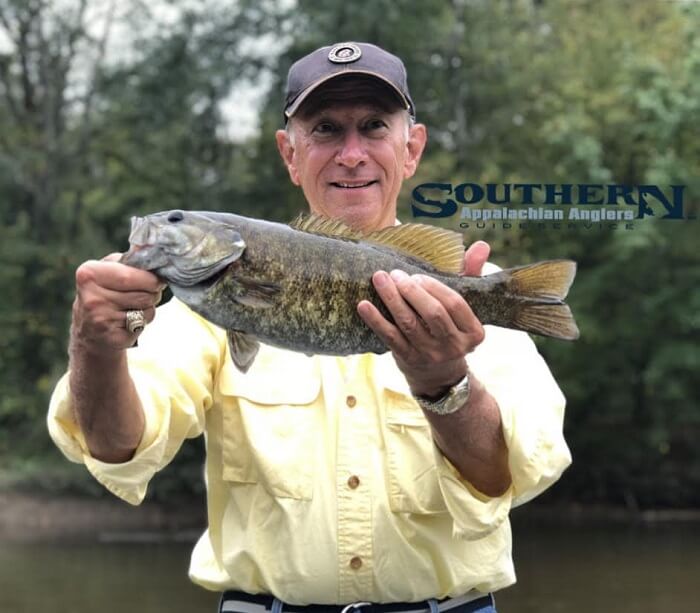
Trophy Smallmouth Trips in Early Summer in Asheville, NC.
Early Summer Smallies on the Fly
Author: Ethan Hollifield
River smallmouth are one of my favorite freshwater species to target on the fly. This is my favorite time of year to chase smallmouth, and Western North Carolina has an abundance of smallmouth water ranging from large river basins to low elevation creeks and streams. Pound for pound these fish fight harder than any largemouth bass of a similar size, and are absolutely addicting to fish for. Here we’ll go over some tips on gear and fishing techniques to go after mountain smallies this time of year.
Fly Fishing for River Smallies
Regarding tackle, I prefer a fast action rod in the 7 weight – 8 weight range, depending on the size/weight of the flies I’m using and the type of water I’m covering. The reel selection isn’t as important. Just make sure that you have a good quality reel with a larger arbor that won’t fail you on the water. There are a wide variety of lines that will work, but recently I’ve been experimenting with single handed spey lines for smallmouth and have found that they are excellent for covering water and making quick, long casts to likely holding spots. Saltwater tapered lines are also applicable for this purpose. You don’t need a fancy leader for these fish. I generally use a 9ft- 12ft leader going from a 30lb butt section to 1x or 2x tippet.
Smallmouth Fly Selection
For flies, I prefer impressionistic patterns that can imitate crayfish, hellgrammites, or baitfish: all of which smallmouth eat willingly when the opportunity arises. Subsurface patterns like clouser minnows, Dave Huedas creek crawler, Tim’s moppet, and murdich minnows are all excellent patterns to use in almost any body of water. Surface poppers (either deer hair or foam) ,Todd’s wiggle minnow, or a gurgler are my go to when I’m trying to seduce a smallmouth to the surface. Really anything that has good action will generally induce a take. My favorite colors are olive, brown, white, or chartreuse/ pink.
Smallmouth Hiding Spots
Smallmouth like other bass species are ambush predators. In a river or creek, look for places where there are drastic changes in water depth or shadow lines created by streamside vegetation. Patches of grass, natural river foam, deep eddies, and rock ledges are all likely hiding places where they can stay out of the current and hidden from prey. Regardless of whether I’m fishing from a boat or wading: I generally try to make upstream presentations as much as possible. Try working a popper or a subsurface pattern with as slow, erratic retrieve that will keep the fly in the strike zone longer. If you’re fishing topwater exclusively: cast upstream or across, let the rings settle, and twitch the rod tip to “pop” or otherwise barely move the fly across the surface as it goes over fishy spots. More often than not, a smallie will come out of cover to investigate and eat the fly once it’s sitting dead still or on the fall. Let the fish tell you what sort of retrieve and presentation that they want. If the fish are taking fly as soon as it hits the water, then you can become more aggressive with your presentation.
It Is Addicting
I caution any dedicated trout bum that fly fishing for smallmouth bass is an addicting game. Once you’re hooked, it’s nearly impossible to get the image of an acrobatic and downright mean smallie on the end of your line out of your head.
